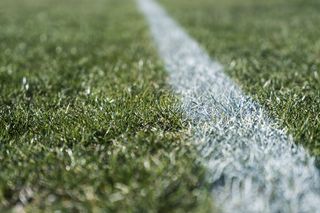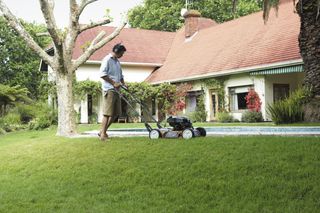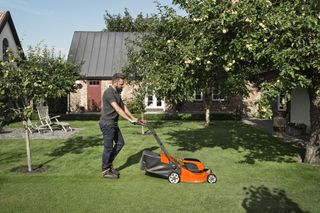
The best times to mow your lawns and trim your hedges
There are few things that will transform your garden into a manicured botanical haven more than a freshly mowed lawn and well-kept hedges. While lawn mowing and hedge trimming seem like relatively straight-forward jobs, there are optimal times you can do them to help both yourself and your garden reap the maximum benefits.

The optimal time to mow your lawn
There are two optimal time periods for lawn mowing during the day: mid-morning and late afternoon.
Mowing your lawn mid-morning is the ideal solution. Enough time has passed for the early morning dew to dry out and the heat of the day hasn’t reached its peak, which gives the grass time to recover. Late afternoon is also a great time to mow as the temperature is starting to cool down which puts less stress on the grass as after it’s cut.
During summer, we recommend you increase your mower height between 7 - 8cm tall when mowing your lawn. This is so that the longer grass blades provide more shade to the soil underneath and decreases the amount of evaporation, keeping your lawn looking luscious and healthy.
If your lawn has become overgrown, make sure you check out our overgrown lawn care guide to ensure you do not cause any lasting damage to your lawn.
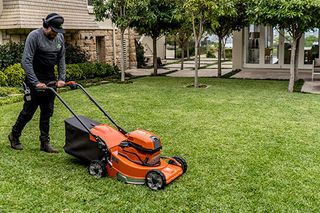
When Not to Mow
If using a traditional lawn mower, you need to take care when choosing the time of day to mow your lawn. As a general rule, early morning is the worst time to mow. The reason for this is the grass is still dewy and moist, which will cause the grass to form wet clumps that need to be cleared from the mower blades as you go. If your lawn has any diseased grass, then mowing wet grass in the morning also provides the right conditions to spread the disease to other areas.
By noon the dew will have evaporated, but this is still not the optimal time to mow due to photosynthesis, a chemical process that occurs in plants in order for them to transform sunlight into energy which they use as fuel. When the sun is at its highest during the middle of the day, this is when the majority of photosynthesising happens and retaining moisture is critical for your lawn. Mowing your grass at this time cuts off the tips and allows more moisture to be lost through evaporation. Mowing during the early evening should also be avoided as there is not enough light left in the day for the lawn to recover.
An alternative solution to traditional lawn mowing is the Husqvarna Automower®, a robotic mower that does the work for you. Automower® has built-in sensors which adjust operation depending on grass growth, weather conditions and tricky areas. No matter the complexity of your garden, your entire lawn will have a healthy and well-kept look every day.
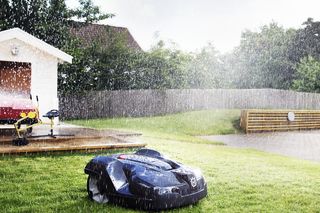
Handy lawn lowing do’s & don’ts
- DO change the pattern of your mowing regularly.
- DO use a quality mower (Cheap mowers may be more expensive than you think).
- DON’T mow with dull blades as this can cause lawn discolouration and disease.
- DON’T cut the grass too short.
- DON’T cut long grass twice in the same session; give it time to recover between mows.
- DON’T mow wet grass.
Why is pruning and hedge trimming important?
While hedge trimming may not be considered the most important gardening task, an unruly hedge will easily compromise a garden’s beauty. Keeping on top of your hedge trimming encourages healthier and thicker plant growth and also contributes to the safety of your garden, as removing loose or diseased branches can help prevent injuries.
Pruning and trimming allows you to control the size and shape of the plant so whatever your garden, you can design your hedges to suit your style. New hedges should be pruned during their early years to form shape and ensure they grow healthily. Once the hedge is established, maintenance should be carried out on a regular basis.
To avoid your hedge growing too thin at the base and thicker at the top, stay on top of your hedge maintenance and don’t leave it too long between trims. Trimming more frequently encourages the hedge to grow out stronger at the base, giving you a consistent finish from bottom to top. When choosing a hedge trimmer, consider what sort of job you will use it for. When using the right equipment, pruning and trimming can be a satisfying exercise, rather than a chore.
When is the best time of year to trim?
The optimal time to trim varies depending on the kind of hedge and its condition but generally, winter is best as this is when the plants are dormant.
Ideally, late winter and early spring are the best times to prune back overgrown hedges. This is for several reasons:
- Dormant Pruning - several types of plants such as viburnum go through a dormant period during winter. Trimming hedges at this time reduces stress on the plant, particularly if aggressive pruning is required.
- Fewer Leaves - make it easier to see what needs to be pruned.
- Buds Still to Break - pruning should occur before the plant has produced any buds, especially if it requires cutting back drastically.
- Avoid Trimming When Dry - major pruning during hot, dry weather should be avoided as the sun can burn new foliage.

How often should you be trimming your hedges?
Depending on the variety, some hedges require pruning a few times a year and for others, once is enough.
Deciduous hedges do well with a deeper trim late in winter, then regular trims throughout the rest of the year. These types of hedges can handle more intense cutting as they are fast growers. Typically, deciduous hedges have two growth spurts a year; one during early spring and a smaller one in summer. To keep your hedges looking tidy, it is best to prune after each of these.
Evergreens are better pruned during early spring, prior to blooming, and thrive when pruned biannually with a maintenance trim in summer.
Which plants work best as hedges?
There are many species of plants that can be used as hedges in Australia. Five of the most popular plants and the best times to trim them are:
- Buxus - prune heavily in late winter.
- Murraya - trim during late autumn or early spring.
- Lilly Pilly - trim in late winter or early spring.
- Viburnums - rarely requires pruning, so light trimming can be done throughout the year as needed. Any heavy pruning should be done in late winter or early spring.
- Japanese Box - trim during early spring, on cloudy days.
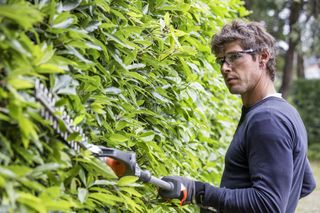
Best tools for hedge trimming and pruning
Pruning and trimming hedges takes some knowledge and skill, but with the right tools the job is so much more enjoyable. A combination of hand-pruning and using a hedge trimmer is recommended to ensure the best results, time after time.
Professional Hedge Trimmer
For larger hedges, it’s best to use a professional hedge trimmer like the Husqvarna 520iHT4. A high-capacity battery-powered telescopic pole hedge trimmer with an extended reach allows you to trim all those hard-to-reach spots. The battery power also means there are zero direct emissions and the low vibrations level result in extremely quiet operation - better for the environment, and your neighbours!
Battery Hedge Trimmer
A Husqvarna battery powered hedge trimmer is lightweight, quiet and easy to use when cutting both vertically and horizontally. There’s no need for power cables or cords, which makes the battery hedge trimmer highly efficient and manoeuvrable, giving you a professional finish every time.
Hedge Shears
Hand-pruning ensures you take off branch tips, which stimulates bud production near the plant’s edges. Hedge Shears deliver precision cuts, plus the blades can be re-sharpened or replaced easily so you can rely on them season after season.
For help finding the right tool for the job, visit your local Husqvarna dealer for expert knowledge and advice.








